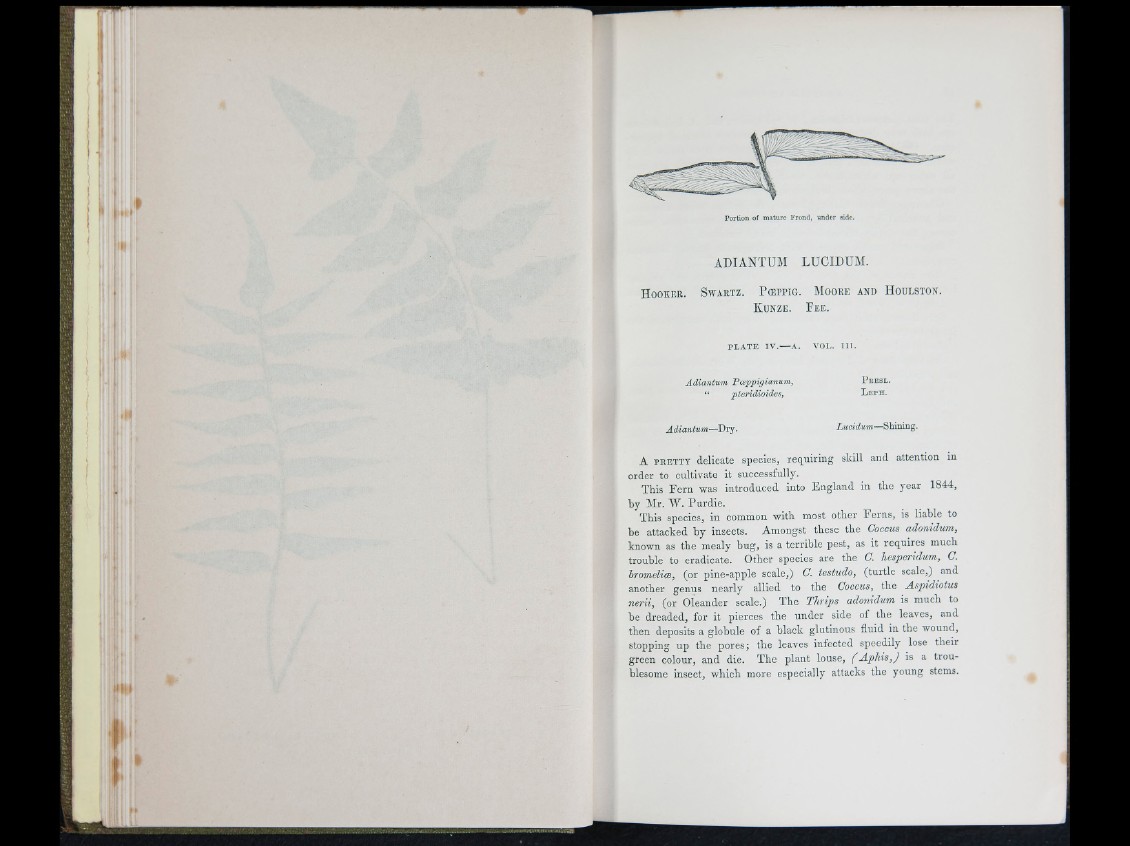
Portion of mature Frond, under side.
ADIANTUM LUCIDUM.
H o o k e r . S w a r t z . P ceppig. M oore a n d H o u l st o n .
K u n z e . F e e .
PLATE IV.—A. VOL. 111.
Adiantum Pceppigianum, P e e s l .
Leph.
Adiantum—D tij . Lucidum—
A PRETTY delicate species, req u irin g skill and attention in
order to cultivate it successfully.
This P e rn was in tro d u c ed into E n g la n d in th e year 1844,
by Mr. W . P u rd ie .
This species, in common with most other F e rn s, is liable to
he attacked b y insects. Amongst these th e Coccus adonidum,
known as the mealy b u g , is a te rrib le pest, as it req u ire s much
trouble to eradicate. Other species are the C. hesperidum, C.
hromelicB, (or pine-apple scale,) C. testudo, (tu rtle scale,) and
another genus nearly allied to the Coccus, the A spidiotus
nerii, (or Oleander scale.) The Thrips adonidum is much to
be dreaded, for it pierces th e un d e r side of the leaves, and
then deposits a globule of a black glutinous fluid in the wound,
stopping up the p ores; th e leaves infected speedily lose their
green colour, and die. T h e p la n t louse, ( A p h is ,J is a tro u blesome
insect, which more especially attacks the young stems.